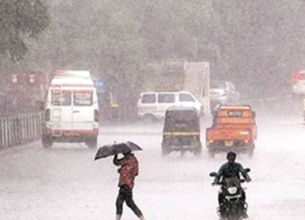MONSOON TO REACH KERALA
16, May 2019

Prelims level : Geography
Mains level :
Why in News:
Monsoon rains in India are likely to be “normal” this year says India Meteorological Department (IMD)
Background:
How does IMD calculate monsoon level?
- The India Meteorological Department (IMD) expresses the projected rainfall in terms of Long Period Average (LPA). The LPA is the average rainfall recorded during the months from June to September, calculated during the 50- year period from 1951 to 2000.
- LPA is kept as a benchmark while forecasting the quantitative rainfall for the monsoon season every year. The LPA of the monsoon season over the entire country is 89 cm.
- Like the countrywide figure, IMD maintains an independent LPA for every homogeneous region of the country.
- E.g. 143.83 cm, 97.55 cm, 71.61 cm, and 61.5 cm for East and Northeast India, Central India, South Peninsular India, and Northwest India respectively.
- Going by this, IMD maintains five rainfall distribution categories on an all-India scale. These are:
- Normal or Near Normal – when there is +/-10% departure of actual rainfall i.e. between 96-104% of LPA
- Below normal – when departure of actual rainfall is less than 10% of LPA i.e. 90-96% of LPA
- Above normal – when actual rainfall is 104-110% of LPA
- Deficient – when departure of actual rainfall is less than 90% of LPA Excess – when departure of actual rainfall is more than 110% of LPA
Rationale:
- The IMD’s optimism is based on global climate models projecting a ‘weakening El Nino.’
- The El Nino, a cyclic warming of the Central and Eastern Pacific region, has historically been linked to a weakening of monsoon rain.
- A temperature rise greater than 1°C for 3 months is considered a ‘strong’ El Nino and a threat to the monsoon. A 0.5°C-1°C rise is called weak El Nino conditions; currently the El Nino is 0.9 C. The IMD’s models in March, expect the El Nino to peak around May and then recede for the rest of the monsoon months.
- Globally too, other models expect El Nino to recede after June or July.
- All these suggest the possibilities of a normal as opposed to below normal monsoon rains in India this year. Another factor, called a positive Indian Ocean Dipole (IOD) (warming in the western Arabian ocean) could neutralise the potential negative impact from the El Nino.









